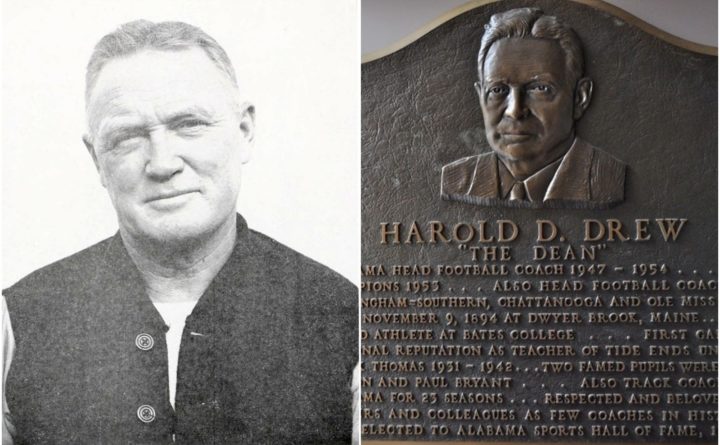Harold “Red” Drew was born in 1894 in Dyer Brook. He served in the U.S. Navy in World War I and World War II, and eventually wound up coaching at one of the powerhouse college football programs in the country.
Drew was raised in Patten and attended Patten Academy for three years before going to Ricker Classical Institute and graduating in 1912. He attended Bates College in Lewiston, where he played football and baseball and competed in the pole vault for the track team. In 1916, he set the school record in the pole vault, 11 feet.
Drew, who was known as “Spud” during his college years, received his degree in physics from Bates in 1916. He enrolled in graduate studies at Springfield College, where he played football and captained the 1917 team.
He joined the U.S. Navy, serving in the Canal Zone during World War I as an ensign and aviator from 1917 to 1918. After the war, Drew returned to Springfield where he played football in 1919 before graduating in 1920 with a physical education degree.
Drew began his college career as an athletic director, football coach and basketball coach at Trinity College (1920–24). Upon a recommendation from legendary coach Knute Rockne, Drew moved on to Birmingham–Southern College (1924–27). He then was hired as a football assistant coach at the University of Chattanooga (1927–31) by athletic director and football coach Frank Thomas, with whom Drew would remain associated for most of the next 25 years.
He served as Chattanooga’s athletic director and the head coach of its football and basketball teams.
In 1931, Drew began his long association with the University of Alabama, serving as the head track coach and assistant football coach. He spent three years in the Navy during World War II and organized “fleet recreation” on Saipan.
When Thomas was hired as the Alabama football coach in 1931, Drew became an assistant coach (1931-41) there. He coached the ends for the undefeated 1934 team won the national championship.
That unit included Don Hutson, an eventual Pro Football Hall of Famer who was the first star wide receiver in the National Football League. He also mentored Holt Rast and Paul “Bear” Bryant, later the iconic coach of the Crimson Tide.
He missed the 1942, 1943 and 1944 seasons while serving as a lieutenant commander in the Navy. After the war, he became the head football coach at the University of Mississippi for one season.
In January 1947, Drew was hired to succeed Thomas at Alabama. In his first year, the Crimson Tide went 8-3 and was ranked No. 8. His team’s 55–0 victory over Auburn in 1948 remains the most lopsided in the rivalry.
From 1947 to 1954, Drew’s team posted a 54-28-7 record and made appearances in the Sugar, Orange and Cotton bowls.
Drew was selected as the SEC Coach of the Year in 1952, and guided the 1953 team to a Southeastern Conference championship and a Cotton Bowl berth. His football tenure ended after the 1954 season, but he was retained as Alabama’s head track coach and associate professor of physical education. He coached track there for 23 seasons.
Drew was inducted into the Alabama Sports Hall of Fame in 1970.
He and his wife, Marion Darney, had three children: Polly, Harold Jr. and Bobbie. Drew remained in Tuscaloosa, Alabama, after retiring and died there in 1979 at age 84.





